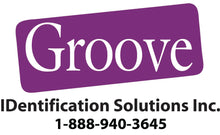In today's fast-paced, digitalized world, traditional key cards and physical access control systems are becoming relics. Mobile access control has revolutionized how businesses manage their security and efficiency in the workplace. By leveraging the power of smartphones and cutting-edge technology, mobile access control offers plenty of benefits that supersede the limitations of traditional access methods. Let's explore the importance of mobile access control in the workplace and how it is transforming business environments.
- Enhanced Security: The primary reason why mobile access control is gaining traction is its enhanced security features. Mobile credentials, such as biometric data, PIN codes, or encrypted digital keys, offer a significantly higher level of security compared to traditional access cards or keys. The risk of unauthorized access due to lost or stolen cards is virtually eliminated, as employees always have their smartphones with them, and these devices can be further secured with biometrics or passcodes.
- Seamless Integration: Mobile access control systems can be seamlessly integrated with existing security infrastructure and IT systems. This ensures a smooth transition from conventional methods, allowing businesses to maintain robust security without the need for extensive hardware replacements.
- Flexibility and Scalability: Traditional access control systems can be cumbersome to manage, especially in dynamic workplaces with changing employee statuses. Mobile access control offers unmatched flexibility and scalability, allowing administrators to easily add or revoke access rights, create custom access groups, and managing permissions remotely. This level of control is invaluable in enhancing security while adapting to evolving security needs.
- Increased Efficiency: Mobile access control not only strengthens security but also boosts workplace efficiency. With a simple tap or biometric scan, employees can swiftly enter their designated areas, eliminating the need to fumble for access cards or wait in lines. This leads to reduced entry and exit times, ultimately enhancing efficiency and productivity in the workplace.
- Remote Access Management: Another compelling advantage of mobile access control is the ability to manage access remotely. In the case of unexpected events or emergencies, administrators can instantly adjust access permissions from anywhere with an internet connection. This capability ensures that sensitive areas can be secured promptly, even when administrators are off-site.
- Touchless Technology: In the wake of global health concerns, the touchless nature of mobile access control has become increasingly important. With no need for physical contact or shared surfaces, the risk of spreading germs is greatly reduced. Businesses can create a safer environment for employees and visitors alike, promoting health and well-being in the workplace.
- Enhanced User Experience: Employees appreciate user-friendly technologies that simplify their daily routines. Mobile access control aligns perfectly with this expectation. It provides a convenient and familiar method for accessing various areas within the workplace, leading to higher employee satisfaction and a more positive work environment.
The importance of mobile access control in the workplace cannot be overstated. With its heightened security features, seamless integration, flexibility, scalability, and enhanced efficiency, this technology is transforming how businesses approach access management. By adopting mobile access control, organizations can not only bolster their security but also improve overall workplace productivity and employee satisfaction.
Call Groove Identification Solutions today to get started with HID Mobile Access Control! 1-888-940-3645





